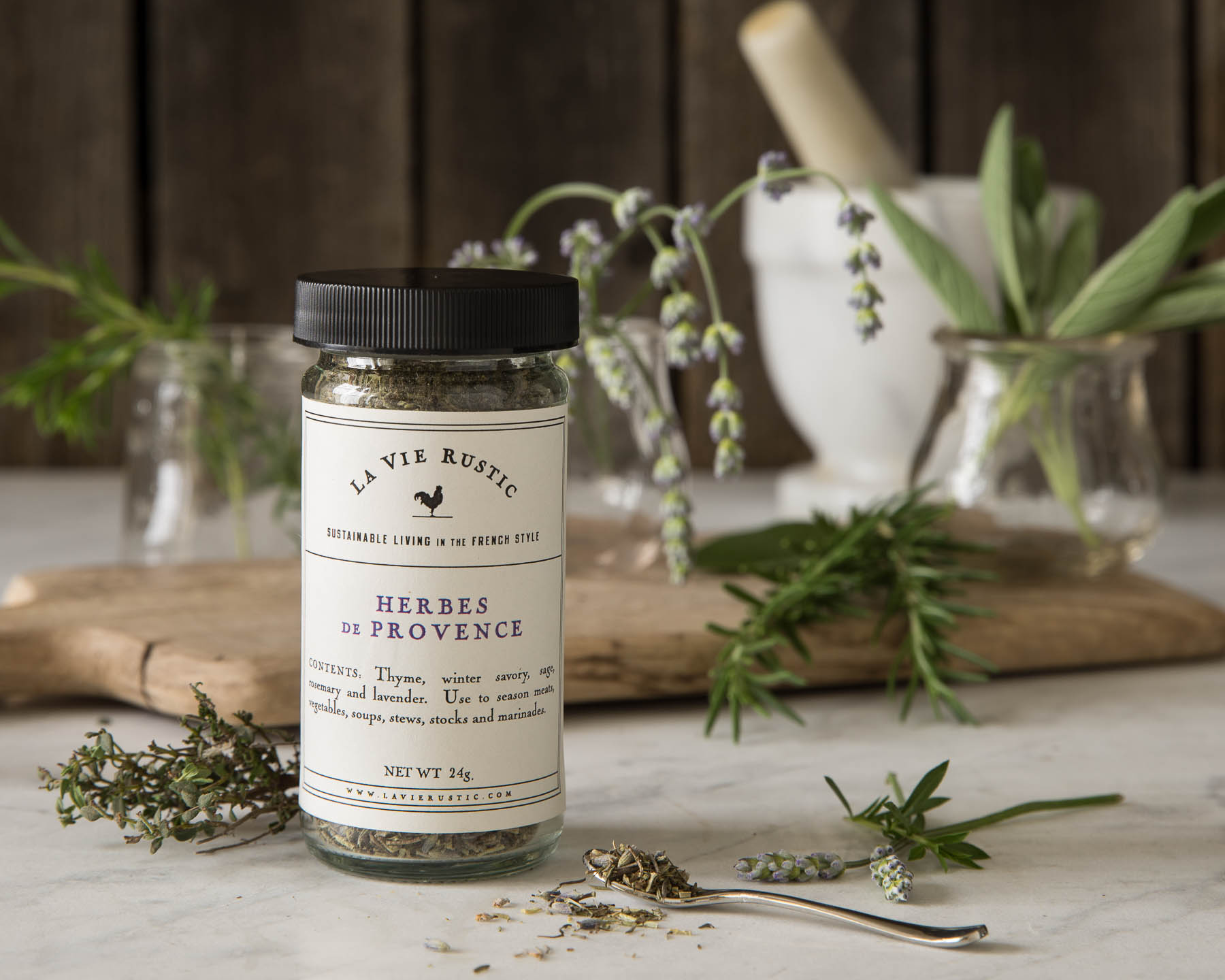MESCLUN DE NICE
La Vie Rustic has a new product, just in time for holiday gift-giving – a seed mix for growing your own, authentic mesclun salad, in the style of Nice, France, where the salad originated.
Origins of Mesclun
High above the city of Nice in Southern France, on a hill that was the site of the ancient Roman city of Cemenulum, now Cimiez, a Franciscan monastery was founded in the 16th century.  As part of the monastic life, the monks there, like elsewhere, cultivated a potager garden that included various lettuces and greens as well as other vegetables and herbs. By the 19th century, so the story goes, the monks of Cimiez were too poor to purchase lettuce seeds of a single variety, so for their salads they grew a mixture of whatever lettuce seeds they could obtain, and supplemented the young leaves with the shoots of chervil, and wild greens like roquette, purslane, dandelion, and chicory that grew near their hillside gardens.
As part of the monastic life, the monks there, like elsewhere, cultivated a potager garden that included various lettuces and greens as well as other vegetables and herbs. By the 19th century, so the story goes, the monks of Cimiez were too poor to purchase lettuce seeds of a single variety, so for their salads they grew a mixture of whatever lettuce seeds they could obtain, and supplemented the young leaves with the shoots of chervil, and wild greens like roquette, purslane, dandelion, and chicory that grew near their hillside gardens.
The resulting mélange or mix was a balance in flavor of mild from the lettuces, slightly bitter from the chicory, spicy from the roquette, chervil, and nasturtium leaves and flowers. There was also harmony in the variation of colors of the ingredients from light to dark green to magenta and red, and in the shapes of the leaves. Oakleaf lettuces and roquette were treasured for their elongated pointed leaves, a contrast to the curved leaves of the butterhead lettuces and the spoon shape of the romaine. Chervil was considered a key element, not only for its slightly anise-lemon flavor but also for its lacy elegance.
By the early 20th century the mix, under the term Mesclun, became identified as a specifically Niçoise salad mix but not until the 1960s did the mix appear in the markets and restaurants in other parts of France.
Today, to be a considered a true Mesclun de Nice, the mix must contain chervil and roquette and a minimum of five different lettuces, though many Niçoise insist on a minimum of eleven other different ingredients to include lettuce, escarole, and frisée.
However, there are a multitude of variations on Mesclun that use Asian greens, such as mizuna for spiciness, baby spinach, chard, or beet leaves for mildly bitter flavor and in the case of chard and beet leaves, color. Radicchio is frequently added as well.
Regardless of the mix combination, purists insist that the leaves must be no larger than 7 centimeters or about 2 ½ inches. If the leaves are larger, it is considered to be a young salad mix, no longer Mesclun
The leaves are cut from the growing plant, allowing for continuous regrowth.
About La Vie Rustic’s Mesclun de Nice
Ours is a balanced and harmonious mixture of seeds of seven different types of French heirloom lettuce, of two different French heirloom escaroles and one frisée, plus chervil and roquette. These are pre-mixed and packed into a muslin bag. A smaller muslin bag contains nasturtium seeds. There are enough mixed seed to plant a five foot row or five-foot square patch 3 times.
The seeds can be sown directly in the ground, in a planter box or a pot. They can be planted in rows or scattered planted, French-style in a patch. Regardless of the method, they should be planted a scant ¼” deep in prepared soil or planter mix in a sunny location, covered with a very, very light layer of soil or potting mix and watered. Plant the larger Nasturtium seeds ½ ‘inch deep and cover accordingly. During growing, the soil or mix should be kept moist. Germination is in 5 to 7 days, slightly longer for the chervil.
The leaves are harvested by cutting them with a knife or scissors when they are 2 1/2 to 3 inches tall, leaving a few of the outer leaves in place. Continue to water the planting for renewed growth. To be assured of a continuous harvest, plant a row or a patch every 3 to 4 weeks.
Use the leaves and blossoms in salads or course, but they are other creative uses as well, such as this breakfast dish of avocado toasts and eggs. 
Mesclun de Nice Salad Seed Mix……….$20.00

